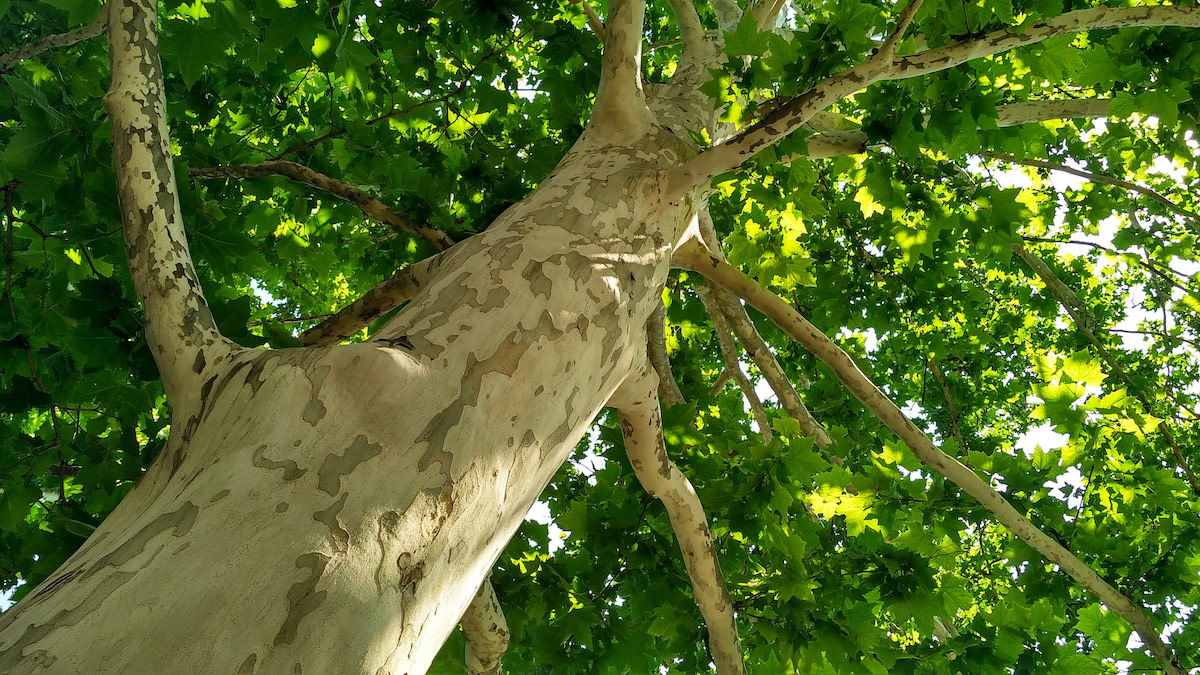Sycamore Tree Care: How to Grow an American Sycamore Tree
Written by MasterClass
Last updated: Sep 24, 2021 • 3 min read
The American sycamore tree is a large shade tree in the Platanaceae family. Indigenous to the eastern half of North America, this fast-growing tree stands out for its plate-like, mottled bark and large leaves that turn from dark green in the summer to orangey-brown in the fall.
Learn From the Best
What Is a Sycamore Tree?
The American sycamore tree (Platanus occidentalis) is a deciduous tree native to the eastern United States—specifically the area north of Florida and south of Maine. It occasionally appears in far southern Ontario and parts of northeast Mexico. Also known by the common names occidental plane, American planetree, buttonwood, western plane, and water beech, this large tree is known for its rapid growth rate and pleasing fall colors. This has made it popular as a street tree and in residential landscaping. Sycamores are also used in commercial forestry. Sycamore wood is used to build musical instruments, furniture, and butcher blocks.
Due to its need for relatively moist soil, the American sycamore only grows in the eastern half of North America, which receives reliable rainfall. The California sycamore tree (Platanus racemosa) and Mexican sycamore tree (Platanus mexicana) grow naturally in the far western half of the continent. These species can survive on less water than their eastern counterparts while still surpassing 100 feet at their most mature height. The sycamore maple tree (Acer pseudoplatanus) resembles an American sycamore, but it is actually a member of the family Sapindaceae.
How to Grow a Sycamore Tree
The American sycamore tree grows naturally in USDA hardiness zones four through nine.
- 1. Start with seeds or young trees. Home gardeners and landscapers can grow a sycamore all the way from seed to a mature tree. You can purchase sycamore seeds at a garden center, or—if you live in an area that already has sycamore trees—you can harvest seed balls that naturally fall from the tree in late winter and early spring.
- 2. Space your sycamores appropriately. Sycamore trees frequently grow over 100 feet high. Mature trees also have wide root expanses. Eventually, mature sycamores will need to stand sixty feet away from the closest neighbor trees. To prevent overcrowding, space your sycamore trees sixty feet or more apart and far away from buildings.
- 3. Test your soil pH. The American sycamore is an adaptable tree that can thrive in clay, sand, or loam soils. It does best with a soil pH that is neutral or slightly alkaline. Test your soil’s pH levels and determine whether you need to make adjustments.
- 4. Give your sycamore plenty of sunlight. The sycamore thrives in full sun. It can also do well in partial shade, but a mature sycamore will eventually tower over its neighbors. The wide sycamore leaf is designed to capture the ample sunlight that the plant requires for energy.
- 5. Maintain sufficiently moist soil. American sycamores are moderately drought-tolerant but should be watered regularly—particularly in their early years of life. Mature sycamores have vast root systems and do not need to be watered, except in the case of sustained regional drought.
How to Care for a Sycamore Tree
The greatest challenge in sycamore care is protecting the plant from pests and disease.
- 1. Fungal diseases: Sycamore anthracnose is a type of fungal disease that harms the sycamore leaf and can cause the plant to shed too early in the season. To prevent this fungal disease, regularly rake up dead leaves and prune your tree. Should your tree become infected, you can apply a topical fungicide spray. You can also use fungicides to treat powdery mildew.
- 2. Pests: Invaders like mites, caterpillars, borers, and Japanese beetles can harm sycamore trees. When the trees are young and lower to the ground, you can typically spray them off with a garden hose. If your mature tree becomes infested, you may need to seek help from a certified arborist to control the problem.
- 3. Signs of healthy growth: Sycamore trees readily shed their bark, which amateur gardeners may take as a sign of disease. In reality, a mixture of white bark and mottled bark is common among mature sycamores and a sign of natural growth. Exposed inner bark will harden and eventually peel off, thus continuing the cycle.
Learn More
Grow your own garden with Ron Finley, the self-described "Gangster Gardener." Get the MasterClass Annual Membership and learn how to cultivate fresh herbs and vegetables, keep your house plants alive, and use compost to make your community—and the world—a better place.
